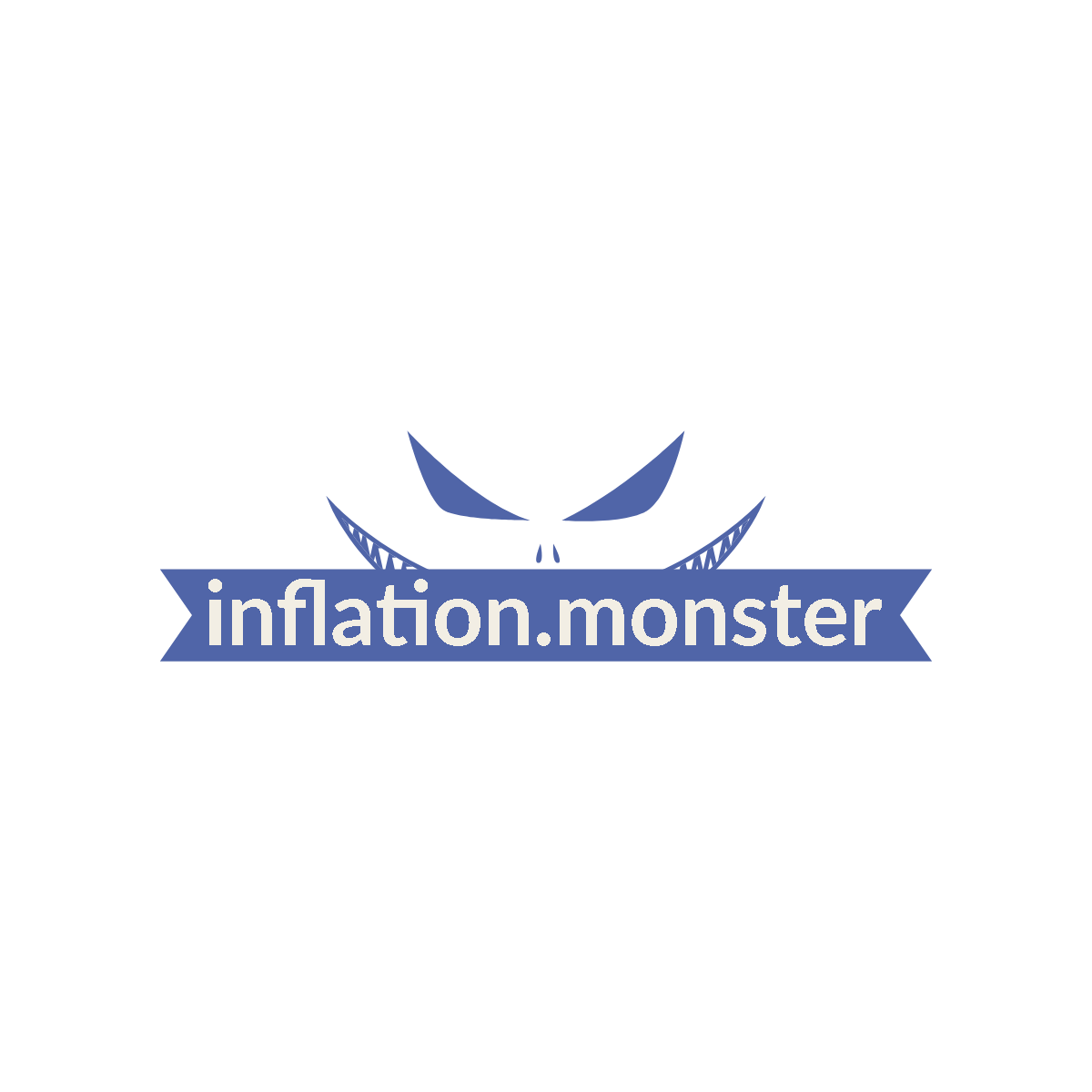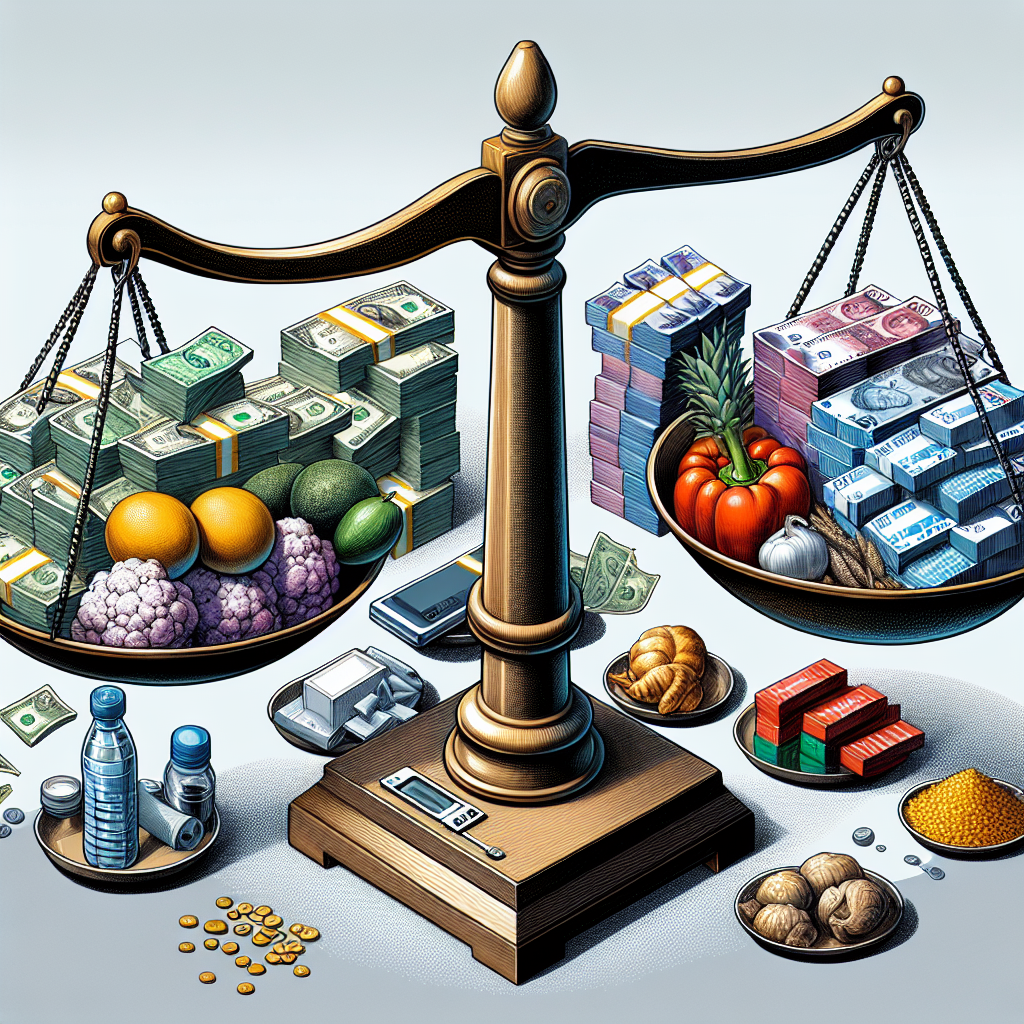Inflation, that sneaky little devil, has the power to wreak havoc on the economies of developing nations. As we set out on this journey to understand the impact of inflation on these countries, we find ourselves confronted with a tangled web of complex economic forces and their interplay with monetary policy. Through our exploration, we hope to shed light on the challenges faced by developing nations as they grapple with the monster that is inflation. So buckle up, folks, because we’re about to take a deep dive into the treacherous waters of inflation and its far-reaching consequences.

The Definition of Inflation
Understanding inflation
Inflation is a term that is often thrown around in discussions about the economy, but what does it really mean? Simply put, inflation refers to the increase in prices of goods and services over time. When inflation occurs, the purchasing power of money decreases, as it takes more money to buy the same amount of goods and services.
Types of inflation
There are different types of inflation that can occur in an economy. Demand-pull inflation happens when the demand for goods and services exceeds the supply, leading to an increase in prices. Cost-push inflation, on the other hand, occurs when the cost of production rises, causing businesses to increase their prices. Anticipated inflation and unanticipated inflation refer to whether people expect prices to rise or not. Hyperinflation is an extreme form of inflation, where prices escalate rapidly and out of control.
Causes of inflation
Inflation can be caused by various factors. One common cause is an increase in the money supply. When the central bank prints more money, it enters circulation, leading to an excess of money in the economy, which can drive up prices. Additionally, inflation can be influenced by factors such as changes in production costs, changes in consumption patterns, and fluctuations in exchange rates.
The Impact of Inflation on Developing Nations
Weakening of currency
Inflation can have a significant impact on the value of a nation’s currency, particularly in developing nations. As prices rise, the purchasing power of the currency decreases, leading to a devaluation of the currency. This makes imports more expensive and can make it harder for the country to compete in the global market.
Rising cost of imports
When inflation occurs, the cost of imported goods and raw materials increases. This can be detrimental to developing nations, as they often rely on imports for their manufacturing industries and consumption needs. Higher import costs can lead to increased production costs, reduced competitiveness, and a subsequent decline in exports.
Reduced competitiveness in export markets
Inflation can also affect a country’s competitiveness in export markets. When prices increase domestically, the cost of production and labor also rises. Consequently, the price of exported goods and services may become less competitive compared to those produced in countries with lower inflation rates. This can result in a decrease in exports and a negative impact on the economy.

Inflation and Income Inequality
Effect on purchasing power
One of the most direct impacts of inflation is its effect on the purchasing power of individuals. As prices rise, the value of money decreases, making it more difficult for individuals to afford the same amount of goods and services. This can disproportionately affect lower-income individuals, as they have less disposable income to cope with rising prices.
Widening wealth gap
Inflation has the potential to exacerbate existing income inequalities within a society. Wealthier individuals often have assets, such as real estate or stocks, that tend to appreciate in value during periods of inflation. On the other hand, lower-income individuals often rely on fixed incomes or wages that may not keep up with rising costs. This can lead to a widening wealth gap, as the rich get richer while the poor find it increasingly difficult to make ends meet.
Social unrest and political instability
When inflation is high and incomes fail to keep up with rising prices, it can lead to social unrest and political instability. Rising costs of living can lead to public dissatisfaction, protests, and even riots. The inability of governments to effectively manage inflation and address the needs of their citizens can erode trust in the government and destabilize the socio-political environment.
Inflation and Poverty
Increased cost of living
Inflation directly affects the cost of living, which can be particularly burdensome for those living in poverty. As prices rise, the basic necessities of life, such as food, housing, and healthcare, become more expensive. This can push already vulnerable populations further into poverty and make it even more difficult for them to escape the cycle of poverty.
Impoverishment of vulnerable populations
Inflation can have a disproportionate impact on vulnerable populations, such as the elderly, children, and those with limited access to education or healthcare. These individuals often rely on fixed incomes or government assistance, which may not be adjusted to keep pace with rising prices. As a result, their purchasing power decreases, and they may struggle to afford essential goods and services.
Unequal distribution of resources
Inflation can contribute to an unequal distribution of resources within a society. As prices rise, those with greater financial resources may be better equipped to absorb the impact of inflation and maintain their standard of living. However, those with limited resources may be forced to cut back on essential expenses or forego certain goods and services altogether. This imbalance can perpetuate existing inequalities and hinder social and economic progress.

Strategies to Combat Inflation
Tightening monetary policy
One strategy to combat inflation is through the tightening of monetary policy. Central banks can increase interest rates to reduce the money supply and curb inflationary pressures. By making borrowing more expensive, this measure aims to reduce spending and dampen demand, which can help stabilize prices.
Fiscal measures
Governments can also implement fiscal measures to address inflation. This may involve reducing government spending, increasing taxes, or implementing austerity measures. By reducing the fiscal deficit, governments can help reduce the overall demand in the economy and mitigate inflationary pressures.
Currency devaluation
In some cases, countries may opt to devalue their currency as a strategy to combat inflation. By reducing the value of the currency, exports become cheaper, encouraging foreign demand, and potentially boosting the economy. However, currency devaluation can also lead to a decrease in the purchasing power of the population, which can pose challenges for individuals and businesses.
Inflation and Economic Growth
Negative impact on investment
High inflation rates can negatively impact investment and economic growth. Uncertainty surrounding future price increases can discourage businesses from making long-term investments. Additionally, high inflation can erode the real return on investment, as the increasing prices negatively affect profitability.
Lower productivity
Inflation can also lead to lower productivity levels within an economy. When prices rise, the cost of production increases, forcing businesses to allocate more resources to maintaining their operations. This can lead to reduced investment in innovation, technology, and employee training, ultimately hindering productivity growth.
Unemployment
Inflation can have implications for employment levels within an economy. When prices rise, businesses may experience higher costs, which can lead to layoffs or reduced hiring. Additionally, high inflation can erode the purchasing power of consumers, resulting in decreased demand for goods and services. This can further exacerbate unemployment rates and cause economic instability.
Inflation and Foreign Investment
Reduced attractiveness for investors
High inflation rates can make a country less attractive for foreign investors. Investors are likely to be concerned about the diminishing purchasing power of their investments due to inflation. They may also have worries about the stability of the economy and the ability to repatriate profits effectively.
Capital flight
Inflation can contribute to capital flight, where investors move their assets out of a country with high inflation rates. This can be detrimental to the domestic economy as it reduces the availability of investment capital and can further exacerbate inflationary pressures.
Dependence on foreign aid
Developing nations heavily reliant on foreign aid may face challenges when dealing with inflation. Inflation erodes the value of foreign aid, reducing its effectiveness in addressing the needs of the population. This can lead to increased dependency on aid and hinder the country’s ability to achieve sustainable economic growth.
Inflation and Debt Burden
Increase in debt service payments
When inflation occurs, the real value of debts decreases over time as the value of money depreciates. This can result in an increase in debt service payments, as borrowers are required to repay the initial loan amount plus a higher interest rate to account for inflation. This can strain government budgets and limit resources available for other important sectors such as education and healthcare.
Limited access to credit
High inflation rates can make it more difficult for individuals, businesses, and governments to access credit. Lenders may be reluctant to provide loans in an inflationary environment due to the uncertainty surrounding future repayment values. This limited access to credit can impede economic growth and development.
Sovereign debt crisis
Inflation can contribute to a sovereign debt crisis, where a country is unable to meet its debt obligations. High inflation erodes the value of the currency, making it more difficult for countries to repay their debts in foreign currencies. This can lead to a loss of confidence in the country’s financial stability, potentially triggering a debt crisis.
Inflation and Food Security
Rising food prices
Inflation can have a significant impact on food prices, posing challenges to food security. As prices rise, the affordability and availability of food can be compromised, particularly for vulnerable populations. Inflationary pressures can increase the cost of agricultural inputs, transportation, and storage, which can subsequently drive up the price of food.
Impacts on agriculture
Inflation can also affect agricultural productivity and production. Rising prices of inputs, such as seeds, fertilizers, and machinery, can increase production costs for farmers. Additionally, fluctuations in prices can disrupt the planning and investment decisions of farmers, potentially leading to lower yields and decreased agricultural output.
Food shortages and hunger
The combination of rising food prices and decreased agricultural productivity can result in food shortages and increased hunger. Inflationary pressures can affect the ability of individuals and families to afford an adequate and nutritious diet. Vulnerable populations, such as children and the elderly, are particularly at risk of malnutrition and food insecurity during periods of high inflation.
Inflation and Social Programs
Budget constraints for social programs
Inflation can put pressure on social programs, such as healthcare, education, and poverty alleviation initiatives. As prices rise, governments may struggle to allocate sufficient funds to these programs, leading to budget constraints. This can limit the reach and effectiveness of social programs, undermining efforts to promote social welfare and equality.
Reduced access to healthcare and education
Inflationary pressures can negatively impact access to healthcare and education, particularly for marginalized populations. Rising costs of medical supplies, equipment, and services can make healthcare less affordable and accessible. Similarly, higher educational expenses, such as tuition fees and educational materials, can hinder access to quality education, perpetuating inequalities in society.
Impact on poverty alleviation initiatives
Inflation can hinder poverty alleviation initiatives, making it more difficult to address the needs of the most vulnerable populations. Rising prices can reduce the effectiveness of cash transfer programs, social safety nets, and other poverty reduction measures. Inflationary pressures can erode the purchasing power of assistance, making it harder for individuals to escape poverty and break the cycle of dependency.
In conclusion, inflation has wide-ranging impacts on developing nations that extend far beyond its impact on prices. From weakening currencies to exacerbating income inequality, and from hindering economic growth to threatening food security, inflation poses significant challenges for these nations. Implementing effective strategies to combat inflation, prioritizing social programs, and promoting inclusive economic growth are essential for mitigating the adverse effects of inflation and promoting sustainable development in developing nations.




